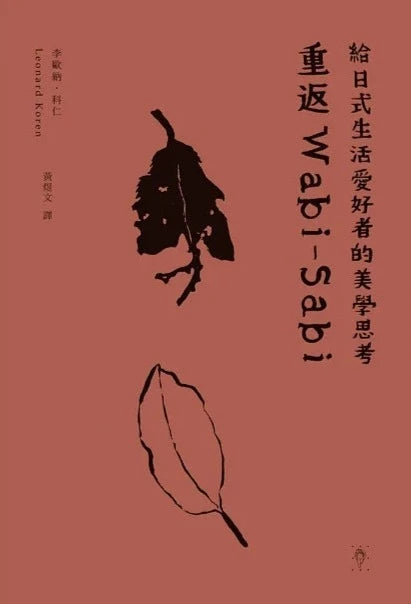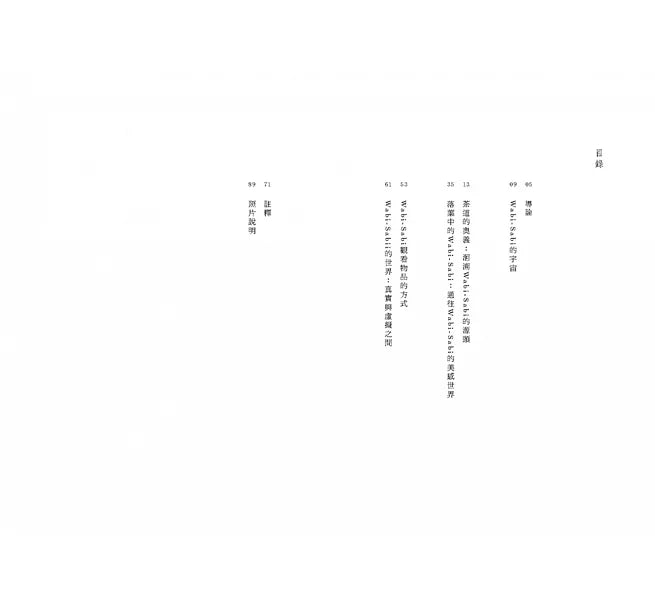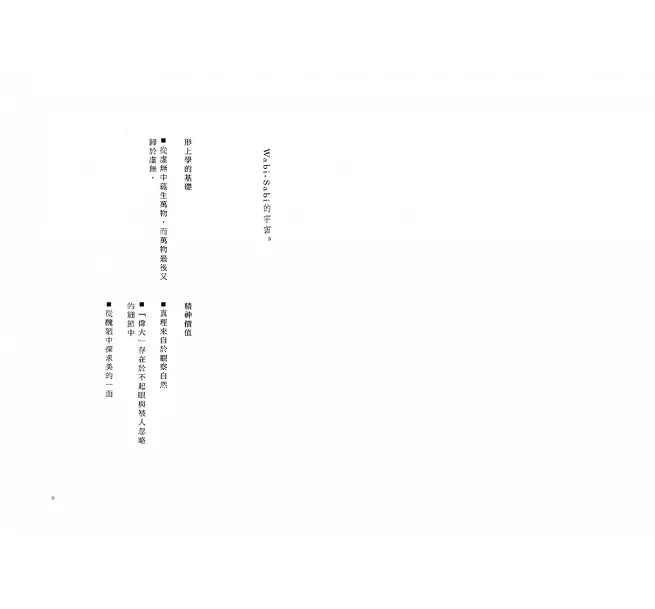1
/
of
4
Return to Wabi-Sabi: Aesthetic Thoughts for Japanese Lifestyle Lovers
Return to Wabi-Sabi: Aesthetic Thoughts for Japanese Lifestyle Lovers
Regular price
MOP$93.00
Regular price
Sale price
MOP$93.00
Unit price
/
per
Couldn't load pickup availability
Continuing the concept of "Wabi-Sabi: Japanese Aesthetic Basics for Designers and Lifestylers",
This book is the second installment in the Wabi-Sabi series of topics that fans of Japanese aesthetics are interested in!
This book is the second installment in the Wabi-Sabi series of topics that fans of Japanese aesthetics are interested in!
Twenty years ago, Leonardo. Keren wrote the book "Wabi-Sabi: The Basics of Japanese Aesthetics for Designers and Lifestylers" in 1994, introducing Wabi in an easy-to-understand way that every Japanese knows but cannot explain clearly. -Sabi mysterious aesthetics. After the publication of this book, it aroused enthusiastic response from everyone. The following year, the Japanese translation was published in Japan. Many creators used the concept of Wabi-Sabi to describe their works and even received creative inspiration from it; it also triggered everyone's interest in Wabi-Sabi through Wabi-Sabi. Sabi’s discussion, and then learn and feel the mystery of Japanese aesthetics.
Twenty years later, in response to the public's widespread discussion and love for Wabi-Sabi, the author handed over "Wabi-Sabi: Aesthetic Reflections for Japanese Lifestyle Lovers". This book goes back to the source and explains in detail the development process of the entire Wabi-Sabi aesthetic system from ancient times to the present, and how Wabi-Sabi works from the historical context and other artistic fields, such as literature, painting, drama, tea ceremony culture, etc. Evolution has become the most respected (high culture) aesthetic standard in Japan, and how do the Japanese implement the aesthetics of wabi-sabi into things in life?
The author also shares his own transformation of mind after observing Wabi-Sabi for twenty years. It can be said to be the most complete and authentic introductory guide for every reader who wants to have a glimpse of the Japanese aesthetic universe of Wabi-Sabi.
・"Wabi"? "Sabi"?
・Or "Wabi-Sabi"?
・What exactly is Wabi-Sabi?
When the word Wabi-Sabi is mentioned, most people will always think of the beauty of wabi-sabi and decadence in all things.
Its important representative is the Japanese tea ceremony master Sen no Rikyu.
Sen no Rikyu once said a famous saying:
Among all the rituals and utensils of the tea ceremony, the most important is the hanging scroll.
(Hung in the alcove of the tea room, it is usually the calligraphy left by an enlightened monk)
These hanging scrolls generally express Zen-like principles.
As a master of Japanese tea ceremony, Sen no Rikyu has brought the artistic conception of "WABI tea" to the extreme. He went against the luxurious tea culture of the time and used simple folk tea utensils instead of fancy tea utensils, returning to the cultivation of tea's influence on people's hearts. Even the teahouse he designed has a small space and a simple appearance. Guests have to climb through the small door to enter the teahouse. In the teahouse, people can be isolated from the difficulties and worries of the outside world, free from the constraints of traditional social values, and create independent art. Views and philosophical views. The decorations in the tearoom even remove the furniture, and tea is brewed and served directly on the tearoom floor in front of the guests, creating an image of poverty and happiness in a poetic way.
Sen no Rikyu’s tea ceremony model has also become the most classic example of Wabi-Sabi cited by many.








